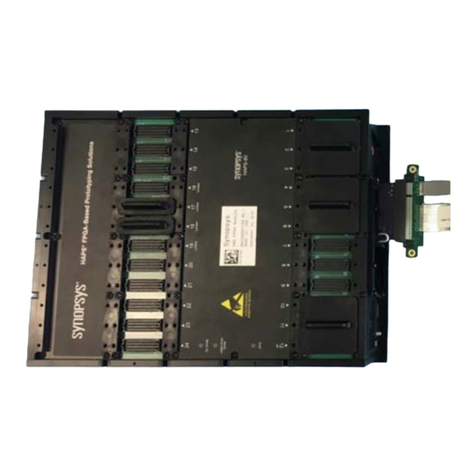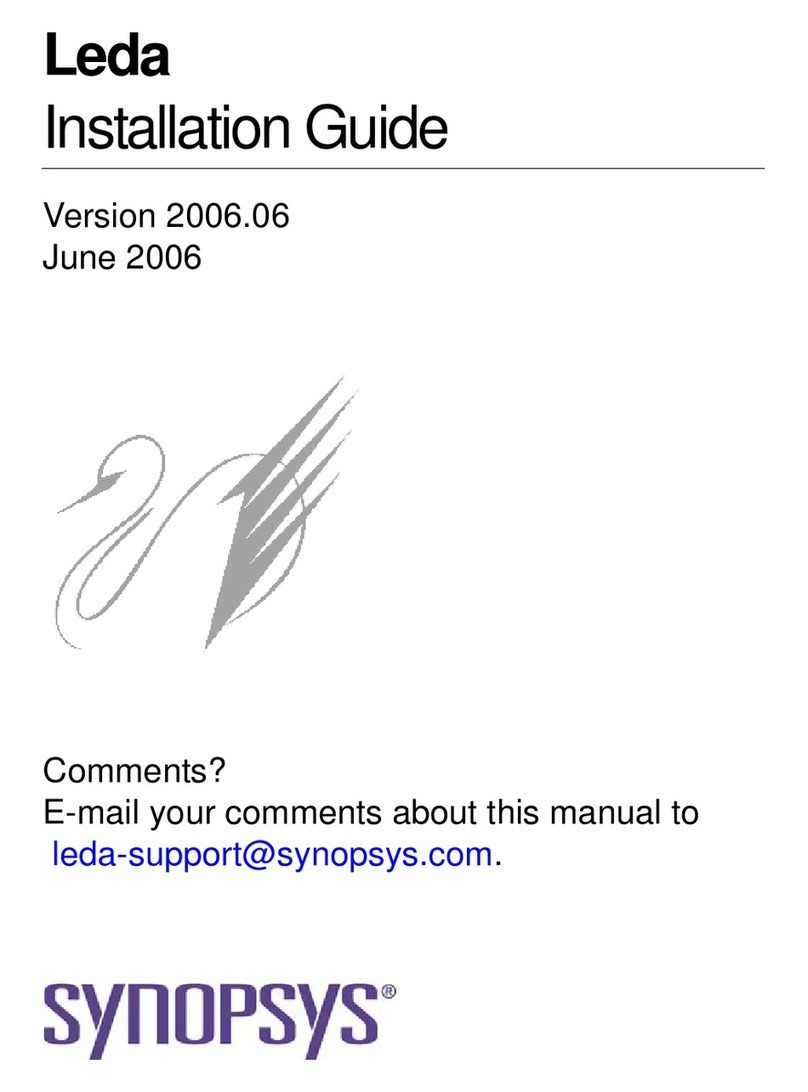
DWC ADC 12b5MSAR, TSMC180 IP Databook
April 2012 Synopsys, Inc. 2-30
Copyright Notice and Proprietary Information
Copyright ©2012 Synopsys, Inc.All rightsreserved. This software and documentation contain confidential and proprietary
information that is the property of Synopsys, Inc. The software and documentation arefurnished under a license agreement
and may be used or copied only in accordancewith the terms of the license agreement. No part of thesoftware and
documentation may be reproduced, transmitted, or translated, in any formor by any means, electronic, mechanical, manual,
optical, or otherwise,without priorwritten permission of Synopsys, Inc., oras expressly provided by the license agreement.
Destination Control Statement
All technical datacontained in this publication is subject to the exportcontrol laws of the United States of America. Disclosure to
nationals of other countries contrary to United States law is prohibited. It is the reader‟s responsibility to determine the
applicable regulations and tocomply with them.
Disclaimer
SYNOPSYS, INC., AND ITS LICENSORS MAKE NO WARRANTY OFANY KIND, EXPRESS OR IMPLIED, WITH REGARD
TO THIS MATERIAL, INCLUDING, BUT NOTLIMITEDTO, THE IMPLIEDWARRANTIES OFMERCHANTABILITY AND
FITNESS FORA PARTICULAR PURPOSE.
Registered Trademarks (®)
Synopsys,AMPS, Cadabra, CATS, CRITIC, CSim, Design Compiler, DesignPower, DesignWare, EPIC, Formality, HSIM,
HSPICE, iN-Phase, in-Sync, Leda, MAST, ModelTools, NanoSim, OpenVera, PathMill, Photolynx, Physical Compiler,
PrimeTime, SiVL, SNUG, SolvNet, SystemCompiler, TetraMAX, VCS, and Vera areregistered trademarks of Synopsys, Inc.
Trademarks (™)
Active Parasitics,AFGen, Apollo, Astro, Astro-Rail, Astro-Xtalk,Aurora,AvanTestchip,AvanWaves, BOA, BRT, ChipPlanner,
Circuit Analysis, Columbia, Columbia-CE, Comet 3D, Cosmos, CosmosEnterprise, CosmosLE, CosmosScope, CosmosSE,
Cyclelink, DC Expert, DC Professional, DC Ultra, Design Advisor, Design Analyzer, DesignVision, DesignerHDL, DesignTime,
Direct RTL, Direct Silicon Access,Discovery, Dynamic-Macromodeling, Dynamic Model Switcher, EDAnavigator, Encore,
Encore PQ, Evaccess, ExpressModel, Formal Model Checker, FoundryModel, Frame Compiler, Galaxy, Gatran, HANEX, HDL
Advisor, HDL Compiler, Hercules, Hercules-II, HierarchicalOptimization Technology, High Performance Option, HotPlace,
HSIMplus, HSPICE-Link, iN-Tandem, Integrator, Interactive WaveformViewer, i-Virtual Stepper, Jupiter, Jupiter-DP, JupiterXT,
JupiterXT-ASIC, JVXtreme, Liberty, Libra-Passport, Library Compiler, Libra-Visa, Magellan, Mars, Mars-Rail, Mars-Xtalk,
Medici, Metacapture, Milkyway, ModelSource, Module Compiler, Nova-ExploreRTL, Nova-Trans, Nova-VeriLint, Orion_ec,
Parasitic View, Passport, Planet, Planet-PL, Planet-RTL, Polaris, Power Compiler, PowerCODE, PowerGate, ProFPGA,
ProGen, Prospector, Raphael, Raphael-NES, Saturn, ScanBand, Schematic Compiler, Scirocco, Scirocco-i, Shadow Debugger,
Silicon Blueprint, Silicon Early Access, SinglePass-SoC, Smart Extraction, SmartLicense, Softwire, Source-Level Design,
Star-RCXT, Star-SimXT, Taurus, TimeSlice, TimeTracker, Timing Annotator, TopoPlace, TopoRoute, Trace-On-Demand,
True-Hspice, TSUPREM-4, TymeWare, VCS Express,VCSi, Verification Portal, VFormal, VHDL Compiler, VHDL System
Simulator, VirSim, and VMC are trademarks of Synopsys, Inc.
Service Marks (SM)
MAP-in, SVP Café, and TAP-in are service marks of Synopsys, Inc.
SystemCis a trademark of theOpen SystemC Initiative and is usedunder license.
ARMand AMBA are registeredtrademarks of ARMLimited.
Saber is a registered trademark of SabreMarkLimited Partnership and is used under license.
All other product or company names may be trademarks of their respective owners.
Synopsys, Inc.
700 E. Middlefield Road
Mountain View, CA 94043
www.synopsys.com





























